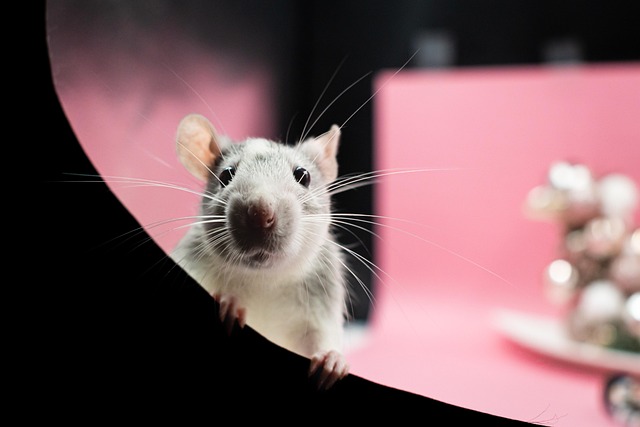Implementing eco-friendly rodent control involves understanding rodent behavior and habitat preferences to target specific areas like attics, walls, and dense vegetation. Strategies include sealing entry points, maintaining sanitation, using natural repellents (e.g., peppermint oil), introducing predator species, and humane trapping techniques such as live traps. These methods prioritize the well-being of both humans and the environment, aiming for sustainable coexistence without toxic chemicals or lethal control. Encouraging natural predators like cats, owls, and reptiles, as well as bio-control methods, further promote ecological equilibrium and sustainability in rodent management.
“Discover innovative, sustainable approaches to rodent management with our comprehensive guide. From understanding intricate rodent behavior to exploring nature’s role in control, we delve into eco-friendly solutions for a humane and safe environment. Learn about effective prevention methods, non-lethal deterrents, and alternative trapping techniques that respect wildlife. Uncover the potential of natural predators and bio-control, offering long-term, eco-conscious strategies for rodent management.”
Understanding Rodent Behavior and Their Habitat Preferences
Understanding the behavior and habitat preferences of rodents is a crucial step in implementing effective and eco-friendly rodent management strategies. Rodents, such as mice and rats, are highly adaptable and thrive in various environments. They prefer areas with readily available food sources, shelter, and safe hiding spots. Common habitats include attics, walls, crawl spaces, and dense vegetation. By identifying these preferred locations, property owners and pest control professionals can focus their efforts on targeted, non-toxic deterrents.
Eco-friendly rodent control methods prioritize the well-being of both humans and the environment by avoiding harmful chemicals. These methods include sealing entry points with sturdy materials, maintaining proper sanitation to remove food attractions, and utilizing natural repellents like peppermint oil or cloves. Additionally, introducing predator species or setting up live traps can humanely reduce rodent populations while minimizing the need for toxic substances.
Eco-Friendly Methods for Rodent Prevention and Deterrence
Many traditional methods of rodent control involve toxic chemicals and traps, which can be harmful to both the targeted rodents and other wildlife, as well as pets and human health. Thankfully, there are numerous eco-friendly alternatives that offer safe and humane solutions for rodent prevention and deterrence. These methods focus on creating an environment that discourages rodents from entering or staying in a particular area.
One effective strategy is to implement physical barriers, such as sealing gaps and cracks around buildings with natural materials like metal mesh or concrete. This simple step prevents rodents from finding easy access points. Additionally, maintaining a clean and clutter-free environment reduces hiding spots and food sources, making it less appealing for rodents. Planting specific herbs and flowers known for their rodent-repelling properties, like mint, lemongrass, and lavender, can also create a natural barrier around homes and gardens.
Humane Trapping Techniques and Alternative Solutions
Humane trapping techniques have gained prominence in recent years as a more responsible approach to eco-friendly rodent management. Traditional leghold traps, known for causing pain and potential injuries to trapped animals, are being phased out in favor of alternatives that ensure swift and painless deaths. One such method is the use of live traps, which capture rodents without harming them. These traps are designed to temporarily hold individuals until they can be released back into the wild or humanely euthanized.
Beyond trapping, several eco-friendly solutions offer effective rodent management. Natural repellents, for instance, utilize essential oils and plants that deter rodents due to their strong scents. Another innovative approach involves the use of predator urine and feces as a means of warning and repelling rodents, leveraging natural predators’ presence to maintain balance in ecosystems. Additionally, habitat modification techniques, such as proper food storage and sealing entry points, remove incentives for rodents to enter homes or buildings, promoting non-lethal, sustainable coexistence.
The Role of Natural Predators and Bio-Control in Rodent Management
In the quest for effective yet humane rodent management, harnessing the power of nature’s balance is a valuable strategy. Natural predators play a crucial role in controlling rodent populations as they maintain an ecological equilibrium. Predators like cats, owls, and certain reptiles naturally prey on rodents, making them a powerful eco-friendly tool. Encouraging and supporting these natural predators through responsible habitat management can significantly reduce rodent infestations.
Bio-control, another aspect of natural rodent management, involves introducing specific species of organisms that target and control pests. This method utilizes the predator-prey relationship in a controlled manner, minimizing the need for chemical or toxic solutions. For example, certain parasitic wasps lay their eggs on or near rodent nests, ensuring the larvae feed on the young rodents, ultimately reducing the population. Such bio-control methods are not only safe and humane but also promote a sustainable balance in the ecosystem.
In light of the above discussions, it’s clear that transitioning to eco-friendly rodent management is both feasible and beneficial. By understanding rodent behavior, employing deterrence methods, utilizing humane trapping techniques, and incorporating natural predators, we can achieve effective and sustainable rodent control. Adopting these eco-conscious practices not only protects human health and property but also conserves the environment, ensuring a safer and more harmonious coexistence with these creatures. This shift towards green solutions is a step forward in responsible pest management.
